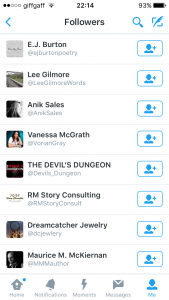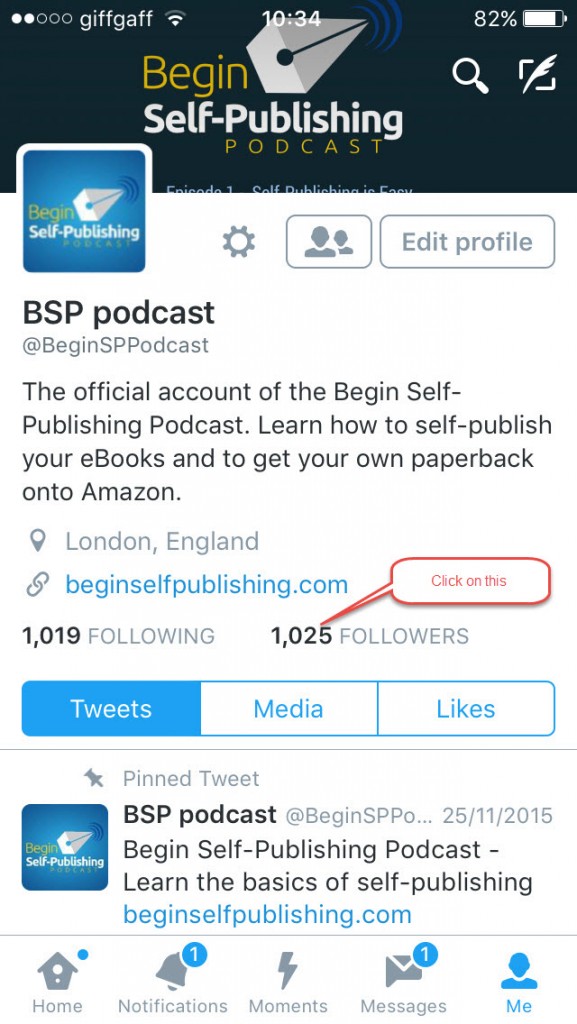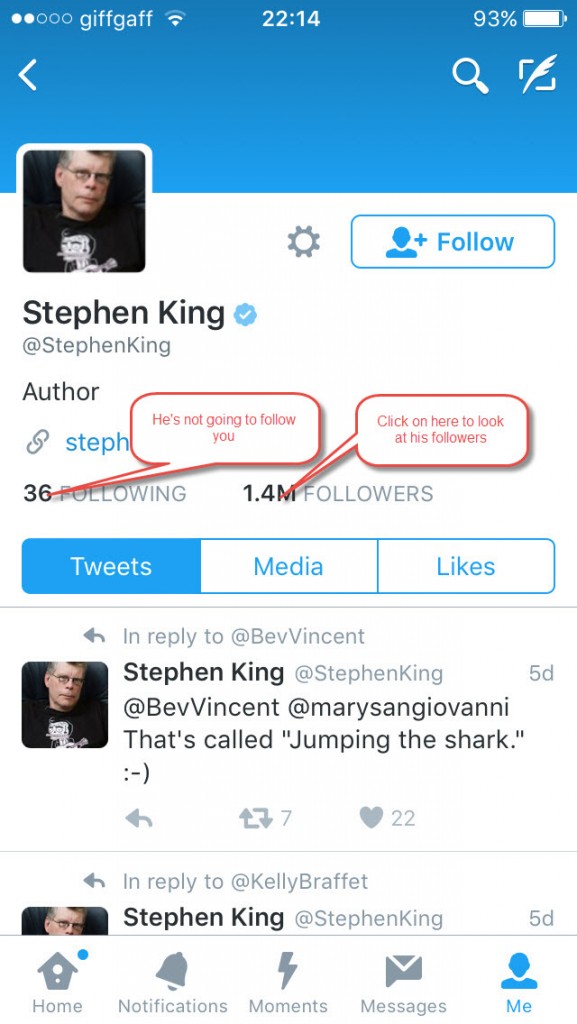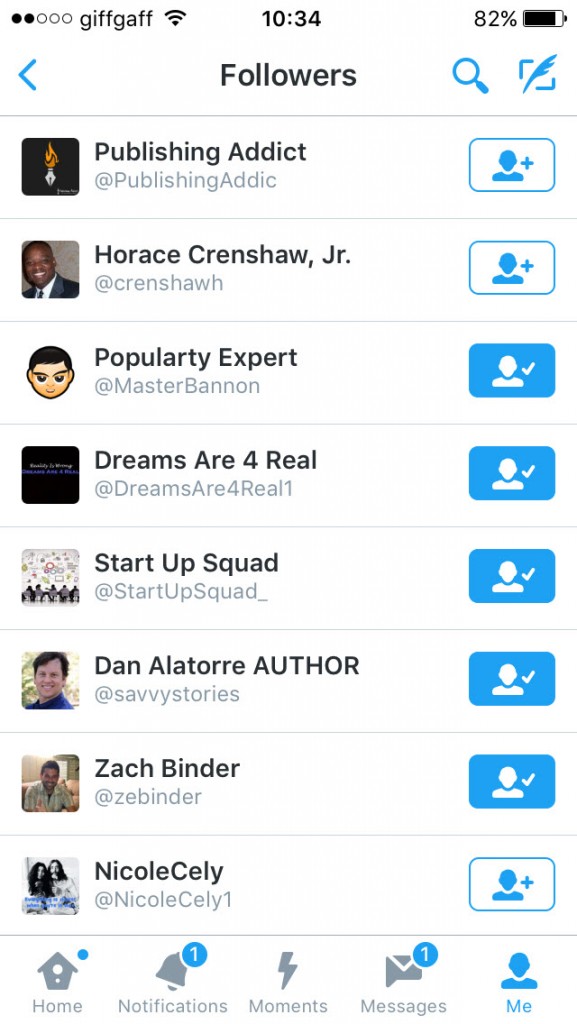In this show we interview Doug Bursch, pastor, writer, speaker and author of the upcoming book Posting Peace: Why Social Media Divides Us and What We Can Do About It. He’s also the host of The Fairly Spiritual Show. So should be an interesting discussion about religion, social media, spirituality and no mention of llama farms.
Interview with Chris Kubbernus
This week we move away from the United States to a Canadian who runs a social media agency in Copenhagen, the amazing Chris Kubby.
He’s an international speaker on social media, his agency works with many European brands and he has a unique more realistic take on entrepreneurism than many of the US-based entrepreneurial “gurus”.
Contact Details for Chris:
Twitter: https://twitter.com/chriskubby
YouTube Channel: https://www.youtube.com/channel/UCXUGjbu7UtOg-ba4UJJfqhw
Building up a Twitter Following Fast
In this post I talk about how to build up a Twitter following quickly, so that you aren’t stuck with 5 people following you and have some credible number of followers when engaging in Social Media Networking. Note that I have taken the same information from my old podcast episode on the Begin Self-Publishing Podcast and included it here, and updated where appropriate.
We are not going to go through the basics of Twitter here as there are many online tutorials about this available, like this one on Mashable. I am just going to take you through the procedure I used to grow this Twitter following fast so you can as well.
There are ways (some morally dubious, for example buying followers and some not) that are quicker for building up followers but usually involve more expense and effort.
Tools I use to build up followers
My method mostly involves these things:
- The iOS Twitter app. I believe you can do the same with the Android app for Twitter but I use an iPhone.
- The site Twitonomy which has enough free services available to be useful
- The site Buffer which again has free and premium options. This time I used the paid version, though if you just use Twitter you can survive on the free version. This app lets you schedule tweets.
- The Twitter website version, occasionally for looking up followers and Twitter analytics.
- Sites such as Feedly.com and alltop.com for finding things to post.
Generally though I find it easier to use Twitter on their mobile app, certainly when it comes to following people back and managing my account. Buffer is also great on an iPhone as it allows you to easily schedule posts from the Safari Browser.
The method
The method I use basically involves the following:
- Follow people who might be relevant for your book or niche.
- Schedule regular relevant and interesting content to post.
- Periodically clean out people who don’t follow you back from your account.
Some people would no doubt say I am missing the point of Twitter in terms of the newsfeed being so full of posts that it becomes unreadable. I work around this using another Twitter feature : Twitter lists. I do occasionally look at my main Twitter feed but it does get full about quickly.
You can set up groups of people on Twitter into Lists. These allow you to follow the tweets of people in particular areas. You do not need to be following these people to add them to a list. I periodically view these lists and see if there are things I want to retweet or reply to. This can be a great way to build a relationship with someone online via Twitter.
Finding people to follow
When I was doing this with the @Stonehampress account I was a bit casual, I went around following virtually everyone. The issue with this is that I ended up with lots of people totally uninterested in my books or a lot of my tweets. In some ways as the brand is not just related to publishing or books this isn’t that much of a problem. But with the @BeginSPpodcast account I wanted to be more targeted, in a similar way to what a proper author account should be. Of course I wasn’t targeting book customers but people who might be interested in self-publishing.
An obvious place to start is to find people who are already ‘big’ in the area you want to target. So if you are a horror writer then Stephen King’s account might be a good one to look at. Select his account in the mobile app. Don’t follow him as he won’t follow you back. Add him to a list if you like, he’s a great source to reply to or retweet, but look at his follower list.
If you click on his followers on the Twitter app you are presented with a list of followers who you can click on each name in turn and check, or if you are lazy just click the follow button to follow.
I’d suggest not just lazily following everyone, simply as Twitter can limit the number of people you can follow at any time if you go too mad and you might as well look for people who might follow back.

What should you look for in a Twitter profile to see if it is someone you should follow?
Firstly I personally don’t EVER follow anyone who is:
- Selling Twitter, Instagram, YouTube or any other kind of social media followers
- Selling porn or webcam services
Apart from being morally dubious they tend to end up spamming you. You can normally tell this from the Bio text.
I also generally tend to avoid accounts who are:
- People with under 5 followers, as this can be a sign it’s one of thousands of automated accounts
- Accounts where when you look on the Tweets and Replies tab you see no difference to the main tab – basically this account isn’t anything more than a broadcast account. In terms of getting numbers up, this doesn’t matter, but it’s not a useful account to follow.
- Accounts that tweet out weird looking tweets like #teamFollow at regular intervals. These tend to clog up your Twitter feed.
More generally, the basic thing I look for is roughly similar amounts of people following the profile as they follow. This suggests strongly that they are active on Twitter and follow back. This isn’t a hard and fast rule but if someone follows hardly anyone and has thousands of followers they are unlikely to follow you back. For the chance they might see your posts go for people with very low numbers of followers.
However, there is an argument for following people with huge numbers of followers who are also following huge numbers. Even though it is fairly unlikely they will ever see your tweets, the way Twitter’s algorithm works for suggesting people for you to follow seems to work (from my anecdotal experience) is that it will recommend you to people who already follow someone that follows you. So if you follow someone with a million followers and they follow you back this boosts the likelihood of your profile being suggested for people to follow.
Look at the bio of the people and see if they are generally the type of people you want to target. For example Stephen King’s local dry cleaner may be following him but it is unlikely that they would be interested in your horror books.
Schedule content
Unless you regularly tweet then you will lose followers. Many people look at the content and how often people tweet before deciding to follow a user on Twitter. Some people will follow based on some of your content they have seen via retweets or via hashtags. Others suggest tweeting loads of content to increase this chance. Personally I would suggest tweeting at least 2 times a day. This is a real pain to do unless you can find some way of scheduling the content.
A free tool I used is called Buffer and there is a version available that lets you queue up a maximum of 10 items to schedule out to social media.
I use services such as Feedly and AllTop to follow a list of relevant blogs where I can find content to schedule out on my Twitter and other feeds. Obviously if you have your own blog (like I do with this podcast) you can and should regularly schedule posts to your content (both the latest and older posts). But don’t just do your own stuff, also include relevant posts by other people, where possible including video and picture posts as they are much more striking on people’s twitter feeds.
Better paid options for scheduling are the paid version of Buffer, Agorapulse and Smarterqueue. Whether you need this functionality depends on how much content you create or want to curate.
Clean up non-followers
Some people would accuse me of being anti-social here but I do this regularly with both my Twitter accounts. I use the site Twitonomy and select ‘Followers’ and then ‘Followers who aren’t following back’ and unfollow them.
This isn’t an exact science as there seems to be a slight delay in the data it extracts. I wouldn’t use it immediately after adding a new set of people, apart from the fact you should give people some time to follow you back.
But do unfollow people, otherwise your account looks unbalanced in your profile, like you are desperately following lots of people to try and build up your following. In many ways you are desperate to build up your Twitter following, but you don’t want people to know that!
Maintenance
Once you have followed a few people leave your account for a while and just follow people back who follow you. Regularly with the Twitter app, click on your profile ‘Followers’ button and then follow people back, looking at their profiles to check they aren’t porn or selling followers.

The most recent people to follow you are always at the top. Those you aren’t following will have a white person icon with a + next to it, to follow them you can click on this. Look at their profiles first by clicking on their name (unless you recognise the name of course!)
I hope you will find this useful in your efforts to grow the followers on your Twitter account.
- « Previous Page
- 1
- …
- 9
- 10
- 11


